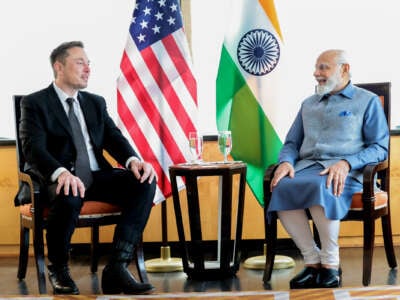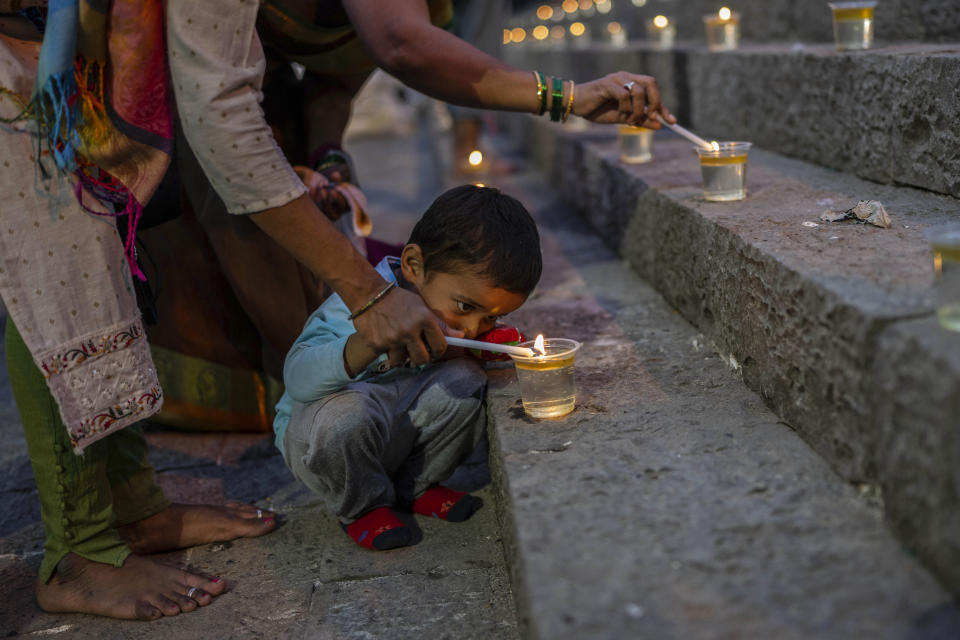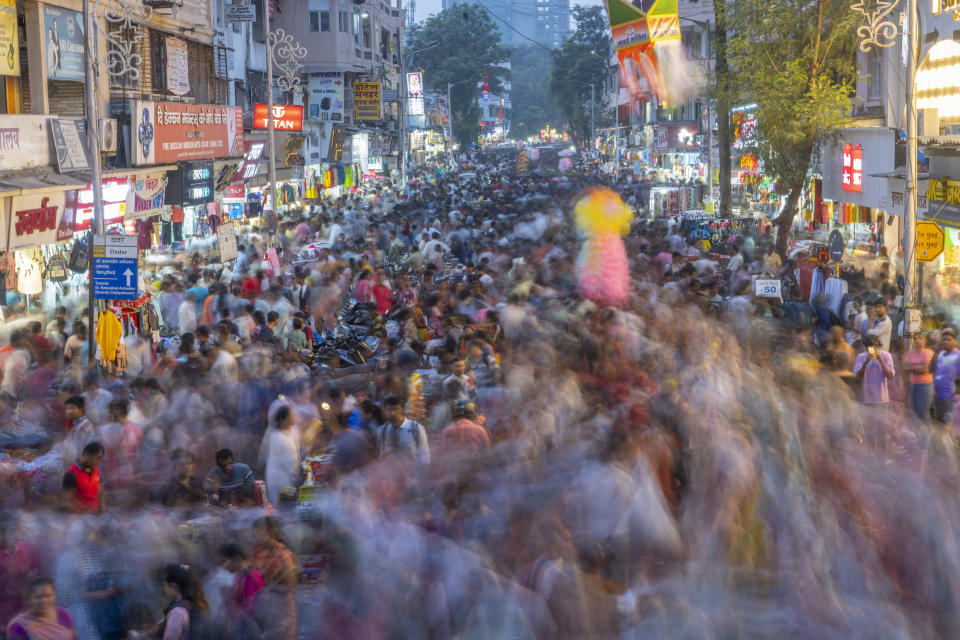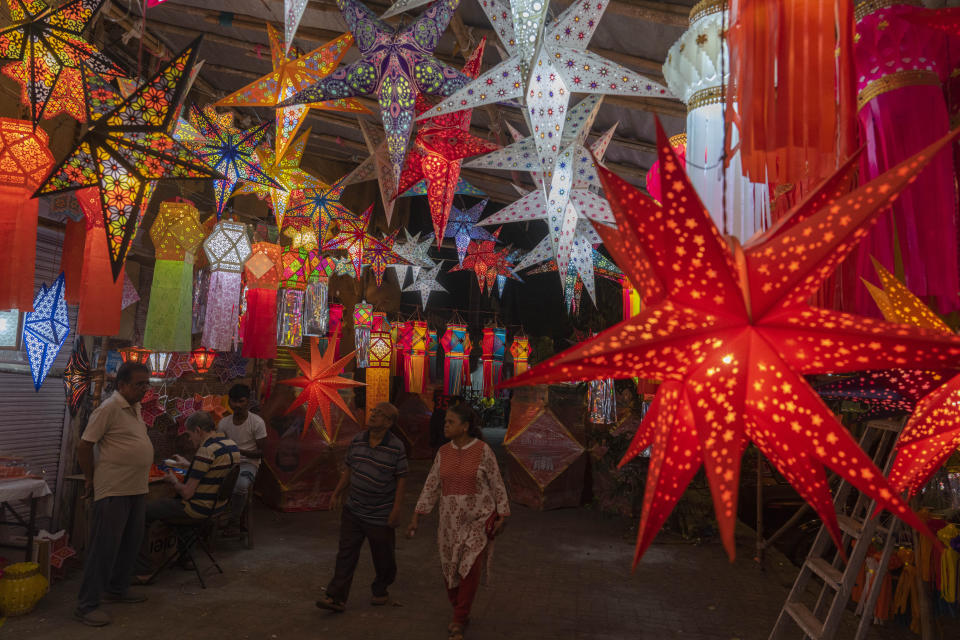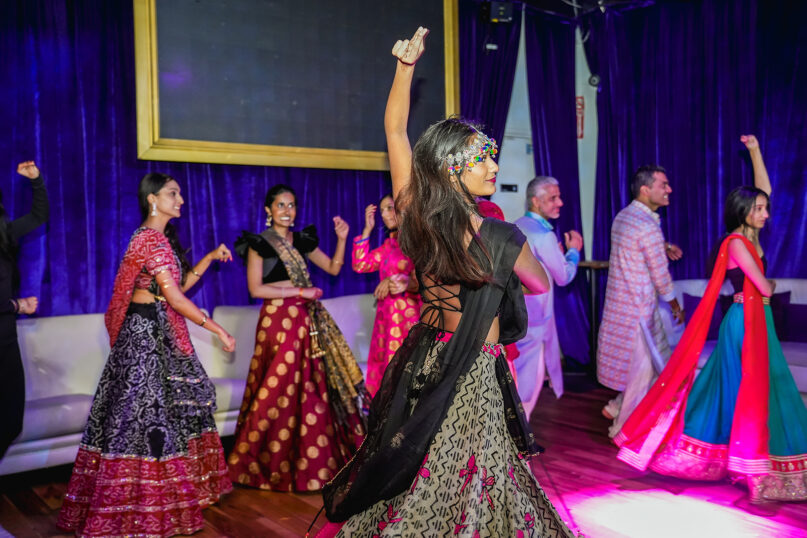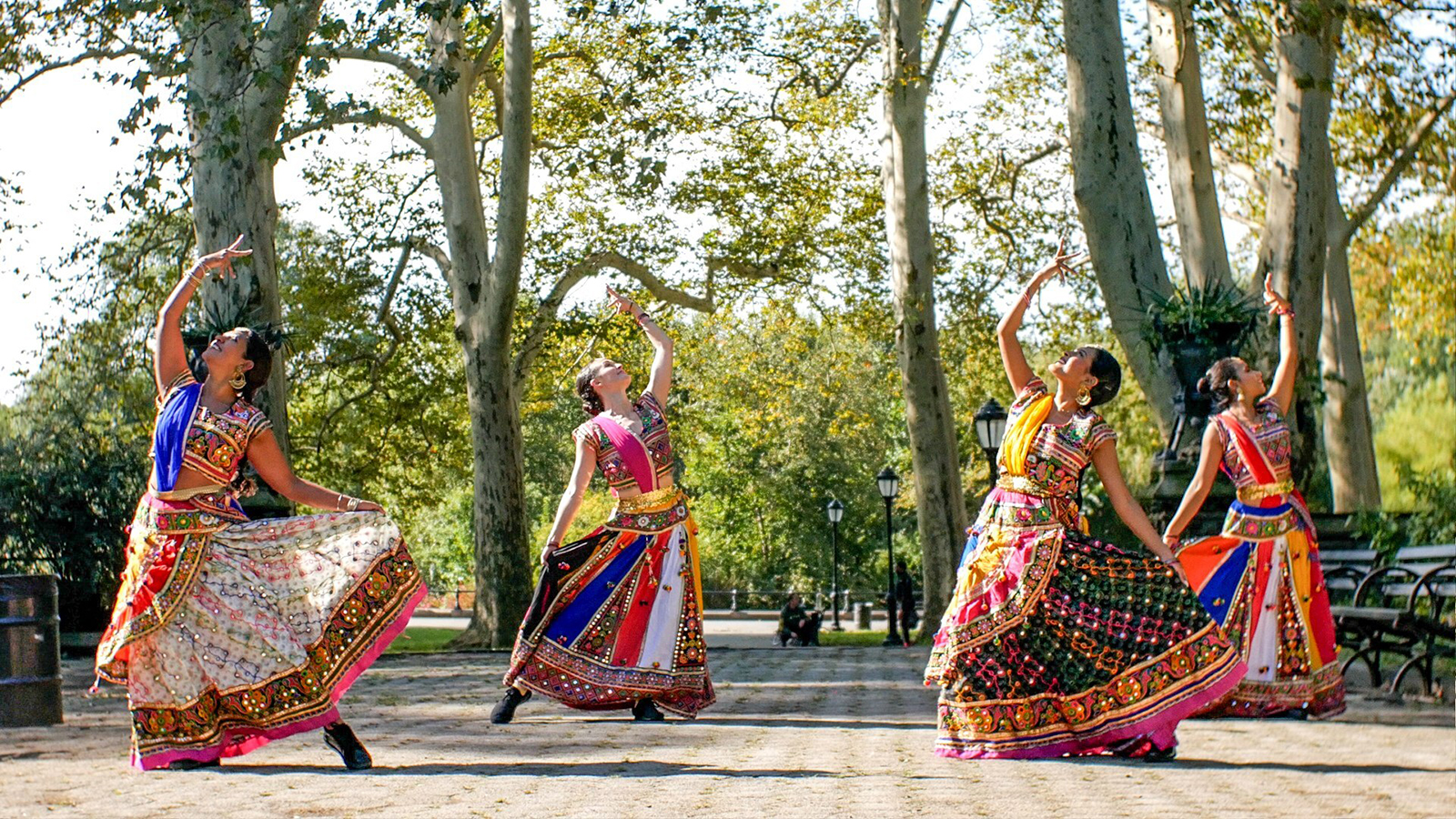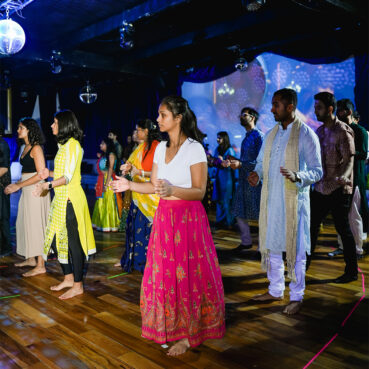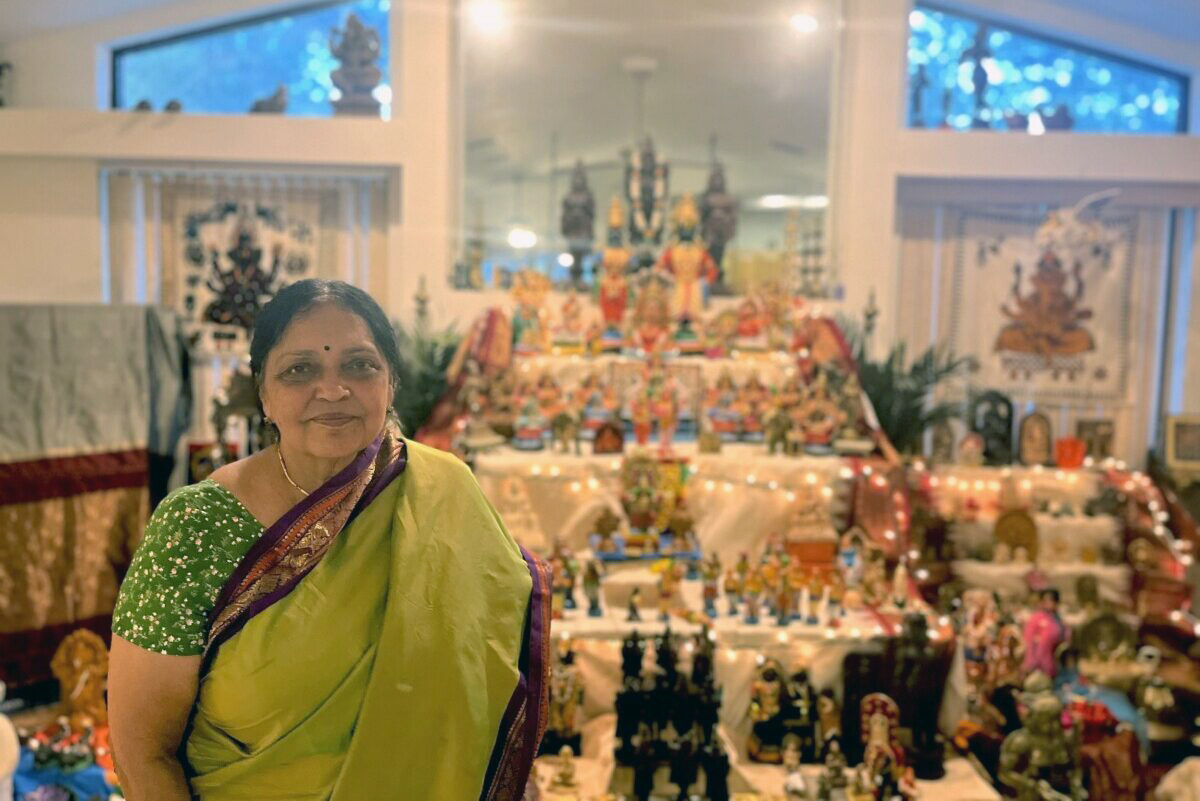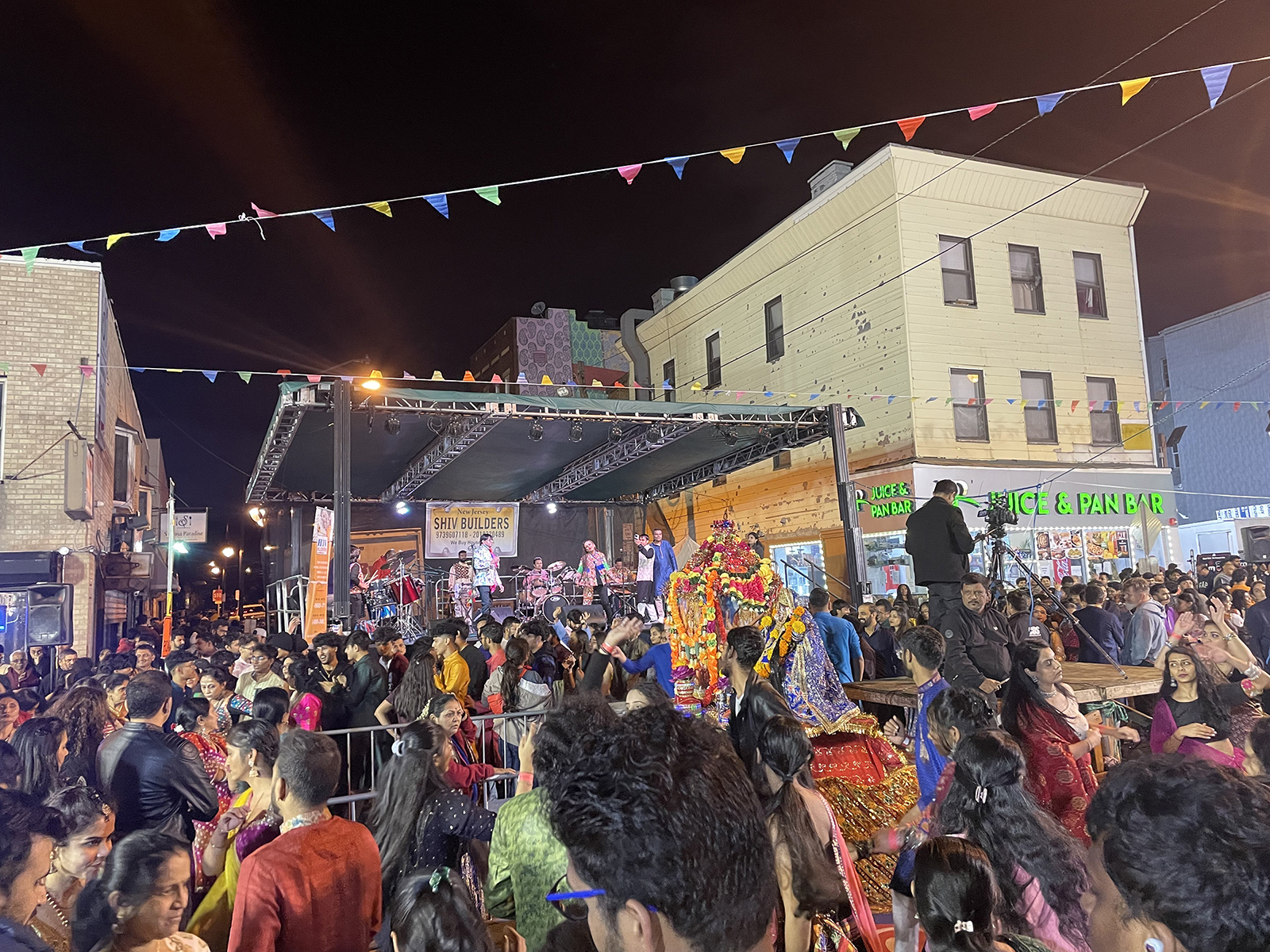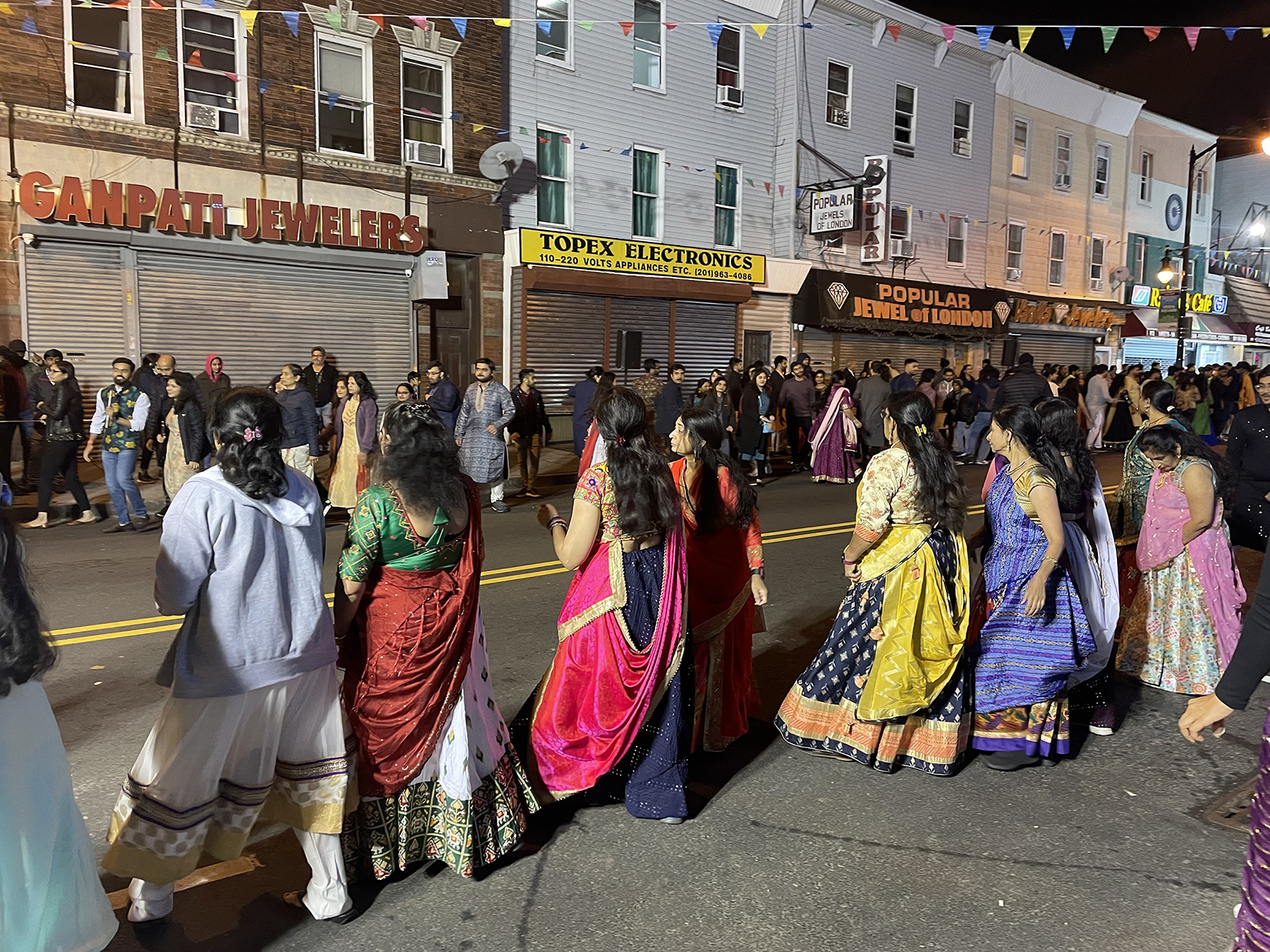As the 100-year-old movement in India celebrates a key victory, a new report reveals its ties with the US far right.
By Samantha Agarwal , TRUTHOUT February 2, 2024
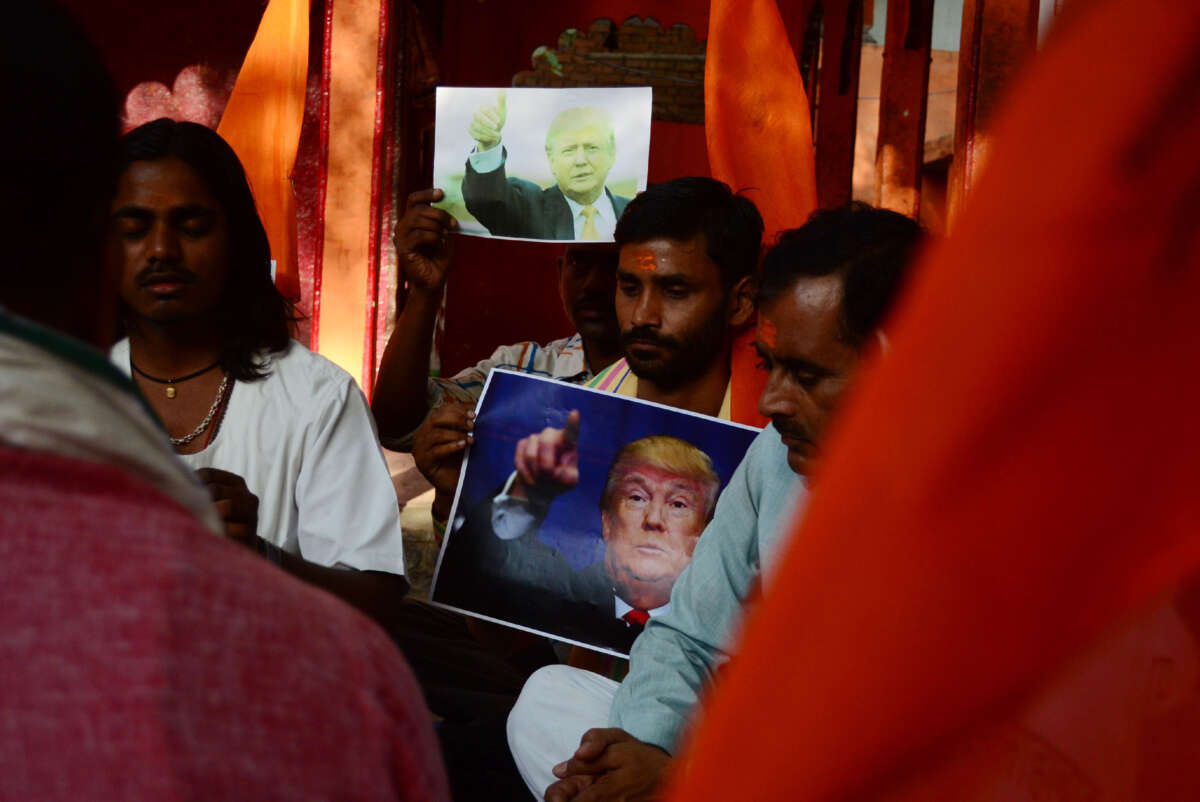
At 1:30 am on the bitterly cold night of January 22, around 50 people gathered at New York City’s Times Square. The crowd had assembled to watch a live telecast of the consecration of the Ram Mandir, a temple to the Hindu deity Rama in the northern Indian city of Ayodhya, led by Prime Minister Narendra Modi. Built on the ruins of a 16th-century mosque destroyed by a Hindu supremacist mob in 1992, the new state-sponsored Ram temple has become a milestone in the 100-year march to power of the Hindu supremacist movement, also known as Hindutva.
On this winter night, members of the Indian diaspora had congregated in one of the country’s most visible public spaces to bear witness to what they saw as a historic achievement. The crowd glanced expectantly at the towering screens, and, when energy lagged, a few among them led the group in chants of “Jai Shri Ram” (hail Lord Ram) and waved triangular, saffron-colored flags — an unmistakable symbol of the Hindu supremacist movement. (The slogan Jai Shri Ram has been appropriated as a Hindu supremacist slogan over a course of a number of violent campaigns and has become a murder cry during lynchings and assassinations.) Yet, as time dragged on, it became clear that the awaited livestream was not forthcoming.
Whether the advertising space was in fact secured for a screening or not was in the end immaterial. The “news” of the Times Square live telecast had been disseminated in the Indian media and had thus served to validate a story that Hindu supremacists have spent years cultivating: that the Indian diaspora is unanimous in its support for Modi’s India. In fact, the use of Times Square as a symbol of global legitimacy, even when such expressions have been deeply contested, has been a repeated strategy of the Hindu far right in the U.S.
It seemed even the hopeful Times Square attendees understood this ars bellica on some level, which kept their mood from souring too much. “It was supposed to be out here… but it’s too bad,” said Paras Pandhare, with a shrug and a laugh. For Pandhare and other attendees that evening, the moment they had gathered to celebrate was a grand historical occasion, marking the end of what they deemed to be a five-century era of subservience. “India is on the rise again, and it deserves to be,” Pandhare added pridefully.
The Centrality of the Ram Temple to Hindu Supremacist Politics
In a way, the Times Square debacle reflected the broader dynamics that color Hindu nationalism, and in particular the Ram temple movement. As in many fascist movements of the past, its membership and supporters have been far less concerned with facts than with the larger aim of reclaiming the nation from their imagined enemies. The central premise of the Ram temple movement — that a Mughal king named Babur demolished a Ram temple to build the Babri Mosque on the exact birthplace of Lord Ram — are claims that arose in the 19th century from various Hindu groups, but have never been proven, and are unlikely to ever be.
RELATED STORYBlocking our organizations’ X accounts in India is another sign of the Indian government’s attempts to stifle dissent.By Rasheed Ahmed & Sunita Viswanath , TRUTHOUT December 16, 2023
In the 1980s, the Vishwa Hindu Parishad (VHP), a mass cultural organization which formed in 1964 as part of the Hindu supremacist movement, capitalized on this mythology, turning it into a national campaign to replace the Babri Masjid (mosque) with a new Ram temple. A few years later, the newly formed Bharatiya Janata Party (BJP), which rules India today, helped propel the “Ram Janmabhoomi” (birthplace of Ram) campaign into the mainstream, first through a 10-state, 10,000-kilometer “rath yatra” (chariot procession) in 1990 and then in 1992 in the demolition of the mosque. The razing of the mosque set off a series of interreligious riots that killed at least 2,000 people, most of them Muslim. This is considered by many to be one of the most tragic moments in India’s post-independence history.
Nonetheless, the Ram temple issue has been a watershed for Hindu supremacists and especially the BJP. Prior to this campaign, in the federal elections of 1984, the BJP won a paltry two seats in the Indian parliament. By 1989, its strength had grown to 85 seats. Ten years later, its seat share had nearly doubled to 161. Today, it has a full majority in India’s multiparty democracy at 303 of the 543 seats. In the past 35 years, the temple has gone from being a site of grievance for Hindu supremacists to a symbol of their triumph. Its construction further rounds out a full decade of Narendra Modi’s rule, during which India saw rising casteist and religious violence, the passage of discriminatory citizenship and anti-conversion laws which target Muslims and Christians, and political disenfranchisement of Indian-occupied Kashmir.
Although the dust from the inauguration of the temple has barely settled, in anticipation of the upcoming national elections Hindu supremacist groups in India and the U.S. are already lining up the next violent usurpation. Times Square rang with chants translating to “Ayodhya is just a preview, Kashi and Mathura are next,” threatening the destruction of two other historically contested mosques. The VHP’s U.S.-based affiliate, the Vishwa Hindu Parishad of America, also put out a press release demanding that a mosque in Kashi be converted into a temple. The promise for the destruction of more mosques and the communal violence that will inevitably follow, will continue to be used to buttress the Hindu far right’s majoritarian claims.
The Global Reach of Hindu Supremacy
The Hindu nationalist project has long been transnational, and has deep roots in the U.S. A report detailing this history has recently been launched by a new coalition called Savera: United Against Supremacy, which describes itself as a multiracial, interfaith platform against the rising tide of supremacist politics. Titled “The Global VHP’s Trail of Violence,” this report highlights the growing connections between the Hindu supremacist movement in the United States and the American far right, as well the former’s complicity in multiple instances of deadly anti-minority violence in India.
In particular, the report draws attention to the Vishwa Hindu Parishad of America, or VHP-A, established in 1970, which is the apex Hindu supremacist organization in the U.S with 21 chapters around the country. Although the VHP-A claims to be “legally separate and operationally independent” of the VHP in India, in moments of celebration — as in the past week — it has often been keen to emphasize its central role in the broader Hindu supremacist movement, and in advancing the programmatic agenda of the VHP.
While the VHP-A was not officially connected to the Times Square gathering, it claimed credit for organizing a number of parallel events including large gatherings in San Francisco, Houston, Chicago and Washington, D.C. In these celebrations, the VHP-A boasted of its role in supporting the demolition of the mosque and the construction of the Ram Mandir, corroborating the revelations of the Savera report. In addition to calling for more mosque demolitions, it recently announced a new pan-U.S. “rath yatra” or chariot march, using the same term used by the movement that demolished the Babri Masjid in 1992 and sparked frequent incidents of communal violence in its wake. This hate caravan that caused widespread violence in India will now be an affront to Muslims in the U.S.
The Savera report shows that the VHP-A has played a continuous role in Hindu supremacist violence, not just during the Ram Janmabhoomi movement, but also in the 2002 anti-Muslim riots in the state of Gujarat, the 2008 anti-Christian riots in the state of Odisha and the infamous 2020 riots in India’s capital of Delhi. In this latest spate of violence, a VHP-A member from Houston, Sachin Chitlangia, both helped run the online platform of and personally raised over $115,000 for Kapil Mishra, who is widely seen as one of the key architects of the Delhi violence.
The VHP-A also tried to platform another hatemonger and monk, Yati Narsinghanand Saraswati, an instigator of the Delhi riots, at an online religious event a year later. “Those we call Muslims in our current era were called demons in earlier eras,” Narsinghanand has said. “Islam should be eradicated from Earth … all Muslims should be eliminated.” The VHP-A had to pull back after progressive groups raised a stink, but their associate Vibhuti Jha went ahead, inviting Narsinghanand to his channel. Jha himself said that “our youth must be trained for war.”
But while VHP-A has contributed to violence in India, it has also worked to fortify far right groups and movements in the U.S. For example, the report recounts the 2012 Stop Islamization of Nations Conference, hosted by infamous Islamophobes Robert Spencer and Pamela Geller, whose organizations have been designated by the Southern Poverty Law Center as hate groups. At the conference, Babu Suseelan, a long time Hindu supremacist leader and VHP member based in the U.S., preached, “If we do not kill the bacteria, the bacteria will kill us. Muslims will breed like rats and they will be a majority.” He continued, “Islam can be stopped! And it can be wiped out.”
“The extent to which Hindu supremacist groups are emerging as important players in global far right and anti-Muslim networks is a matter of deep concern, and we hope Savera’s report sparks further investigation into the topic,” said Wendy Via, co-founder of the Global Project Against Hate and Extremism. This is illustrated by the ways in which Spencer has increasingly pandered to an Indian far right audience, including by writing his Twitter handle in Devanagari (the alphabet used for Sanskrit, Hindi, and other Indian languages). In toto, the Savera report documented nearly a dozen such links between far right actors in the U.S. and the VHP-A, its members and affiliates.

The extent to which the Hindu far right is seeding Trump-aligned candidates is also touched upon. The former 2024 Republican presidential candidate Vivek Ramaswamy, who attended two fundraiser galas hosted by the VHP-A’s advocacy wings, is a well-known example. But Ramaswamy is just the tip of a much broader phenomenon. A notable example mentioned in the Savera report is Manga Anantatmula, a VHP-A leader who played a critical role in the campaign against affirmative action that eventually resulted in the 2023 Supreme Court decision which ruled affirmative action protections unconstitutional. (Immediately following the decision, VHP-A’s advocacy wing tweeted: “We welcome #AffirmativeAction ruling by the #SCOTUS.”)
Anantatmula has since used that involvement to launch her congressional election campaign in Virginia’s 16th district. In a recent episode framed around strategies to flip Indian American votes to the far right on Vibhuti Jha’s show (Jha has run for state office on a Republican ticket as well), Anantatmula invoked the alarmist discourse of white supremacists in her messaging to Hindus. “Let’s not be daydreamers, thinking that bringing your paycheck home is enough to take care of your family. No, your next generation is about to be hanged,” she said. “If they think that Hindus are safe in this country, they are not safe.”
Finally, Hindu nationalists have been savvy enough not to limit their allegiances to the right-wing camp. There are a number of prominent Democrats including Ro Khanna (D-California), Tulsi Gabbard (D-Hawaii), Raja Krishnamoorthi (D-Illinois) and Preston Kulkarni (Texas congressional candidate) who have accepted campaign contributions from Hindu nationalists and are friendly with the VHP-A or allied organizations. Some of them, like Maryland’s Gov. Wes Moore and Lt. Gov. Aruna Miller, deny their ties to Hindu supremacists while depending heavily on these very groups for campaign finance. Although this is not a focus of the Savera report, it is important to understand how so-called liberal Indian Americans are also contributing to the right-wing compact.
The Intersectional Struggle Against the Hindu Far Right
In this context, South Asians in the U.S. have an important role and responsibility in building mass resistance to Hindu supremacy. We can start by educating individuals within our communities about the threat posed by Hindutva (Hindu supremacy) and U.S.-based organizations like the VHP-A. Savera’s new report goes a long way in supplying the information that is needed for such a conversation. Other useful resources include Georgetown’s Bridge Initiative’s VHPA Factsheet, Hindutva Watch and the anti-Hindutva Harassment Manual by the South Asia Scholar Activist Collective.
Moreover, from supremacist chants at Times Square to Anantatmula’s credentials in the attack on affirmative action, it is evident that Hindu supremacy and white supremacy are increasingly joined at the hip — and that many actors in both movements seem willing to put aside their internal contradictions to advance a common majoritarian agenda. The same can be said of the deepening political, economic and ideological ties between Zionism and Hindutva, the stakes of which have never been higher. The Hindu supremacists have not only cheered on Israel’s genocidal assault on Gaza but have capitalized on it to demonize Muslims in India.
Additionally, the U.S. foreign policy establishment’s effort to make India a “strategic defense partner” in the U.S.’s rivalry with China has revealed the bipartisan nature of Hindutva’s U.S. base. While the Obama administration worked to rehabilitate Modi (after he was blacklisted by the U.S. government for nearly 10 years due his role in the 2002 Gujarat pogroms) as part of its “Pivot to Asia” policy, President Donald Trump signed over $3 billion in arms deals with India. And despite Modi’s worsening record of human rights abuses, the Biden administration has now given a “free pass” to Modi in order to maintain this “strategic” partnership. Not even an attempted assassination of a U.S. citizen seems to have gotten in the way of another $4 billion in drone sales to India under the current U.S. administration. Biden’s enabling of the first livestreamed genocide in world history further suggests that no caste atrocity or anti-Muslim pogrom will be too much for the U.S. to stomach in the course of its imperial pursuits.
In this context, the South Asian progressives must concentrate on building new movement coalitions that are not only interracial, internationalist and interfaith but also grassroots and responsible to members rather than “national interests.” Defeating the far right will further require us to take an unwavering stance against casteism, racism and ethnonationalism in all of their manifestations. The formation of Savera is thus a welcome development. If the existential challenges we face are so deeply interconnected, movements on the left must cross traditional siloes too, the coalition argues in its report. “It’s a moment of great crisis and precarity, but also one that has produced deep clarity about our interconnectedness.”
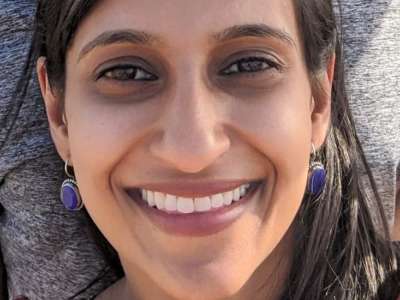
SAMANTHA AGARWALl is currently a Changemaker Postdoctoral Fellow in the School of International Service at American University. Her work is on the intersection of caste inequality and ethnonationalism in India.
